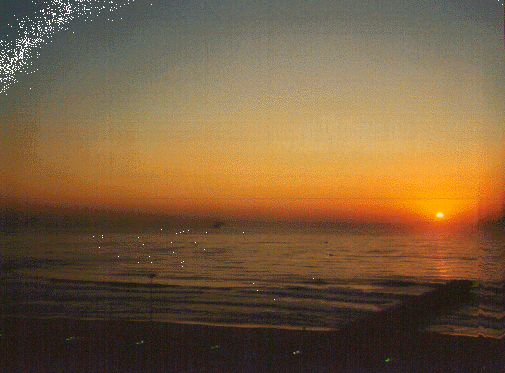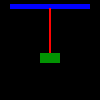

Most waves need a medium to travel in, whether it be water, air, a piece of string or the Sun's atmosphere.
Waves can be divided into two types - called transverse and longitudinal - depending on how they move through the medium.

To make a transverse wave, take a rope, tie it to something at one end and wiggle the other end up and down. You will see a wave move along the rope away from you. A particular bit of the rope will move up and down, but obviously cannot move along the rope. The direction in which the rope moves is at right angles to the direction in which the wave moves.

The Sun setting over the sea
Water waves are another example of transverse waves. If you watch a boat on the sea, the boat bobs up and down on the water when a wave moves underneath it, but it doesn't move in the same direction as the wave (it moves in the direction the captain steers it).
To make a longitudinal wave, you'll need something "squashy". Take an elastic band and tie a weight to the end of it. Hold the other end with your hand and then push down on the weight and let go. The weight will bounce up and down. A wave is moving up and down the elastic band, and the band is moving in the same direction as the wave.

Sound waves are also longtitudinal waves. As the wave moves along it makes the molecules in the air move backwards and forwards in the same direction as the wave.
The Sun produces a lot of noise - its inside is rumbling away. Some of this noise comes to the surface, we call these acoustic waves.
The most important waves which we see in the solar atmosphere are called Alfven waves. These are waves in the magnetic field of the Sun.

|